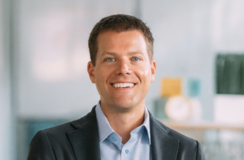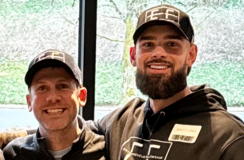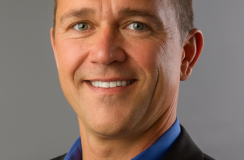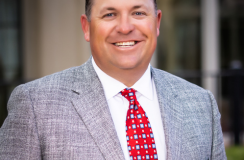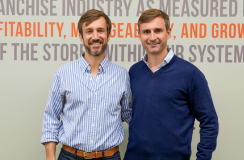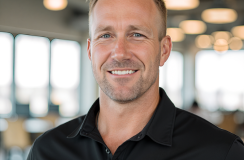eoff Oliver was looking to invest in real estate with a friend when he came across a property for sale that happened to house a laundromat.
The person selling the property also owned the business, as well as another laundromat in a nearby town. One key employee worked at both locations, which helped the businesses run smoothly.
As Geoff went through the financials and talked to the owner, he discovered the laundromat businesses would be more effective long-term acquisitions than the building he’d seen for sale.
He worked out a deal with the seller to acquire the businesses and rent both locations. The price for both was $300K — 4-5X the annual earnings. Geoff paid a 20% down payment to the bank, and put up $30,000 of working capital, taking his total upfront cost to $90,000.
Geoff says he later learned that this was a higher price than the industry average, but he was confident he would be able to grow the businesses by implementing some changes.
Since purchasing the laundromats in 2019, Geoff has already increased revenue by 50-60%. One area he focused on improving was customer experience. For example, he’s introduced an automated call system, so even when someone can’t respond immediately to a customer’s call, the customer still feels that they are being acknowledged.
In this episode, Geoff talks about why laundromats make such great acquisitions, buying vs. building a laundromat, and the lack of competition in rural areas. He also explains what zombiemats are and why they can be excellent opportunities for serious acquirers.
Check out:
✳️ Top takeaways from the episode
✳️ Episode highlights with timestamps
Acquisition Entrepreneur: Geoff Oliver
💵 What he acquired: After looking into a potential real estate investment with a friend, Geoff discovered that the better deal was the laundromat that was occupying the space. As he talked to the owner, who owned another laundromat as well, he decided that acquiring the pair of laundromat businesses was the best move of all. Geoff acquired them for $300,000, and also put in $30,000 of working capital.
💡 Key quote: “That 50% revenue growth is all going to contribution margin, which lets us really focus on, what can we do to really grow these things? Where can we expand? And that's what I love about asset-heavy businesses, or businesses where you focus on the utilization of the asset: Once you get over those fixed expenses, it really starts to generate some serious cash.”
👋 Where to find him: LinkedIn | Twitter

Acquisition Tips From the Episode
Top takeaways from this conversation
🪙 Know your customers’ preferences before instituting changes.
When Geoff took over the laundromat businesses, he knew he wanted to put some changes in place right away. Those included an automated call system to help with customer service, and automatic locks so that the key employee wouldn’t have to physically drive to both locations to open or close. He also added a mobile payment system, which allowed customers to pay using their phones, and allowed the business to send refunds remotely.
However, Geoff recommends making sure you know your customers’ preferences before enacting changes, and how those changes can affect user experience. For example, the majority of customers at Geoff’s laundromats still pay with hard currency. So while he added a phone payment option, the machines still accept quarters, and the laundromats still have ATM and change machines on site.
🧼 Laundromats as investments: what to consider.
When considering acquiring a laundromat, there are three main factors Geoff recommends looking at:
- The size. Small laundromats like Geoff’s grow revenue by increasing the number of times each machine is used. That’s fine as long as you're in an area that can support a minimum of five uses per day. But the current trend is towards big box-style laundromats, in which your fixed costs are lower, which means higher margins.
- Self-service vs. full-service. Adding high-level services can produce high margins, but it also costs more because you need to hire more people.
- Acquisition vs. building. Some cities have regulations on laundromat permitting, so Geoff says it would be cost prohibitive to build a brand-new laundromat. The city or water regulator will make an estimate based on how much water you plan to use. At one point, Geoff says it was as much as $25K per washer, so it often doesn’t make sense to build. Existing laundromats, by contrast, are grandfathered and avoid these fees.
📍 Consider all aspects of the business’s location.
As with any service business, location is important when buying a laundromat. Look at whether the laundromat is in a strip mall or a stand-alone location. You also need to narrow in on the quality of the building the business is in.
“The machines run great most of the time, it's the real estate that I have issues with,” Geoff says. He’s dealt with leaky roofs and pipes, and faulty electrical wiring. “If you're brand new to business acquisitions, and you've never experienced real estate, get very comfortable with that piece of it,” he says.
Episode Highlights
Inflection points from the show
[1:37] Learning through lending: Geoff started his career in the SBA department at a regional bank, and was fascinated by the acquisition world. He learned a lot about how to structure a deal and what’s important to the seller, the buyer, and the bank.
[5:41] Unintentional acquisition: Originally planning to invest in real estate with a friend, Geoff was looking into a property when he realised the laundromat operating out of it held the real value, not the building.
[9:42] Two-for-one: When the seller realized Geoff was more interested in the laundromat than the property, he mentioned he had another laundromat for sale in a nearby town, and offered a deal for both. Geoff realized it made more sense to buy both of them and he worked out a business buyout with a long-term lease.
[11:55] More work, lower payments: One of the businesses is at a single-tenant facility, and the other is in a multi-tenant facility strip center. Geoff has a triple net lease with the property owner: He maintains everything within the laundromat, including issues like roof leaks and equipment breakages, in exchange for a better lease agreement and lower purchase price.
[14:26] Opportunity for growth: When Geoff acquired the two laundromats, he got just under 100 machines total. In the laundromat industry, the metric used is turns (i.e. uses) per day. Geoff says every machine should have easily been doing five or six turns per day, but the average was only three. He did some research and found that customer service needed improvement.
[17:01] Making a plan: After spending 65 days shadowing the seller and his key employee, going to the laundromat on his own to do his laundry, and reading online reviews, Geoff was able to develop a plan for what needed to be improved, and how quickly it needed to happen to grow the business.
[20:18] The numbers: Despite remaining friendly the entire time, Geoff says the deal with the seller died several times before they came to an agreement. The final purchase price was $300K, about 4-5X the annual revenue.
[23:40] Quality of equipment: In a business like a laundromat, quality of equipment matters more than the machine’s earning ability. If it’s poorly made, you can spend twice the amount it’s supposed to generate fixing it. Geoff knew that of the 40 washing machines, 38 were in great condition.
[25:28] Changes: On day one, Geoff was ready to make changes. He installed automatic locks, so the key employee didn’t have to open and close every day. He also added a mobile payment option and an automated call system to improve customer service and retention.
[29:57] Asset utilization: Geoff favors businesses where the focus is on utilizing assets, because when you know that you’re able to meet those fixed expenses, you can focus on how to grow the business.
[32:37] Laundromats 101: Geoff breaks down the key considerations to keep in mind when looking at laundromats, including the size, full-service vs. self-service, and acquisition vs. building.
[37:29] A big fish in a rural pond: After looking at both rural and urban areas, Geoff prefers the rural areas for laundromats, as there’s less competition.
[39:09] Zombiemats: Some laundromat owners neglect their businesses so much there’s an industry term for it: zombiemats. Geoff says these are places that are ripe for acquisition, as the infrastructure is typically good and the businesses are generally in good locations.
[41:21] Passive owner: For Geoff, who likes learning how the machines work, it made sense to buy himself a job. But if you have a good manager in place, you don’t have to be actively involved in the laundromat’s day-to-day business.
[45:15] Find a reliable manager: Geoff’s key employee is paid for 40 hours a week, but for half of those hours, he’s on call rather than on the premises. Geoff says it breaks down to about 15 hours of “sweaty work” — mending machines, cleaning — five hours of customer service, and 20 hours of being at home on call.
Links & Mentions
✅ LoopNet






%20-%20thumbnail.png)

.png)




%20-%20thumbnail.png)


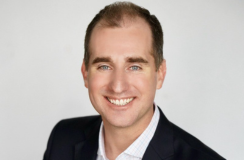





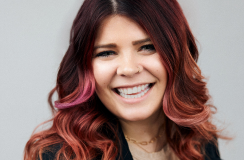
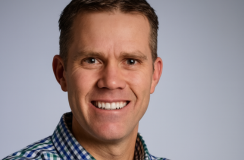

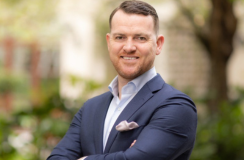



%20-%20thumbnail.png)


